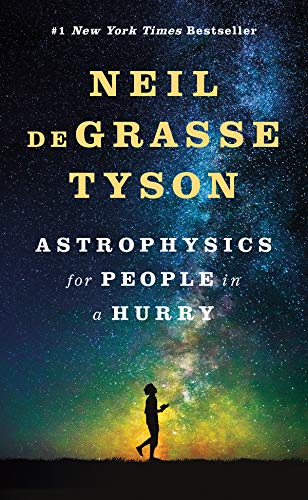한국어 리뷰 (날마다 천체 물리) 는 여기를 클릭해주세요
I am a liberal arts student but I like science books. when I was a high school student, I liked science, specifically Earth Science, and Astronomy. Despite this, I rarely buy these types of books with my money. But I received a book as a gift from someone. So this is a book that I enjoyed reading. this book’s title is “Astrophysics for People a Hurry” literally meaning that this book is for busy people who want to know astrophysics. The book cover is here.

If you are reading this book, there is a strange atmosphere that combines astronomy and physics. For someone like me who switched from science to liberal arts, or for typical liberal arts students, this book makes you feel what physics is. Physics is generally known to frustrate many students in middle and high school, along with the winners and losers.
The author, Tyson, seems to be quite a famous scholar. He is the successor of Carl Sagan, a well-known scholar who wrote the book “Cosmos.”
Looking at the overall content, I used to be interested in astronomy and wanted to study it. However, when it comes to celestial bodies and physics, it shattered all of my romanticism. Astronomy (which was also called earth science at the time) was really interesting, but physics, which I found uninteresting, was an astonishing book that made astronomy uninteresting.
Of course, as a complete liberal arts student (although I have some science background), it may not be interesting to me, but I think it is a great book for those who are just getting interested in astronomy or physics.
Of course, if it was this uninteresting, the book wouldn’t have sold, so there are some interesting elements in it. Do you remember the periodic table that we memorized in chemistry class?

This book includes a periodic table that you might have seen in school at least once. At first glance, it seems unrelated to physics and astronomy, but it was still interesting to see it included. There were also many interesting stories about planets and the space between planets.
Finally, the translator suggests reading the book at least once a week. This book is a slow and thoughtful read, with one chapter per week.
The book introduces the origin of the universe and records that Earth was created by pure coincidence (which I personally find hard to believe). It also explains why the sun and moon appear to be the same size from Earth.
There are scenes that explain the names and origins of planets (such as Uranus) and provide an overview of astrophysics. While the book does explain stars, it is more interested in their degree than in constellations.
From my Christian perspective, it was ironic that I could feel God’s creation once again through these scenes. Of course, there may be readers who do not agree with this, so I will not delve deeper into this topic. If we were to start a debate, it could be done sufficiently, but that is not the goal of this review. It is simply my personal opinion.
The book itself does not support any particular religion. Rather, it seems to have no interest in religion.
However,
In the end, the book leads me to realize that I am alive as a spiritual being and deeply connected to the universe.
What does this mean? Am I considering myself a spiritual being, or do I understand this because I am a spiritual being?
In conclusion, this book is a good introductory guide for those who are taking their first steps into astronomy or have an interest in physics and celestial bodies. However, it may not be easily understood by the general public. Perhaps it is because the author is an excellent scholar. Nevertheless, it is recommended for those who want to build a foundation in astrophysics.